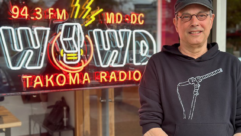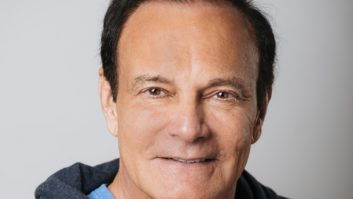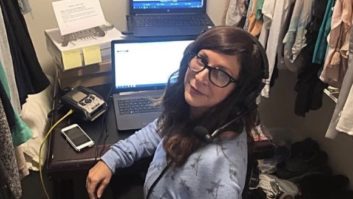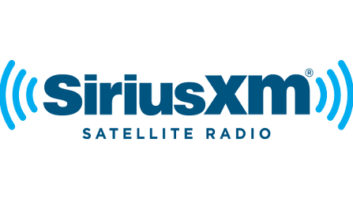Beginning in this issue, Dave Wilson’s commentaries will be a recurring feature in Radio World, appearing several times a year.
Wilson is the owner of WHDX(FM) and WHDZ(FM) on Hatteras Island, N.C. He is also senior director, technology & standards at the Consumer Electronics Association. His views are his own and do not necessarily represent the views of CEA or its member companies.
According to Yahoo Finance, Sirius XM’s enterprise value at this writing is less than $4 billion. This means free local radio broadcasters might be able to buy all of the stock of Sirius XM, buy out those with minority ownership interests, and pay off Sirius XM’s debt for about $4 billion.
If $4 billion sounds like a lot of money to you well, you’re right. But consider this: In 2008 the FCC collectively charged free local radio $22,439,275 in regulatory fees to fund all of the wonderful things it did for us.
Dividing $4 billion by $22.44 million yields a ratio of 178. So, if you want to know how much it would cost a station to participate in a local radio buyout of Sirius XM, simply take that station’s 2008 regulatory fee and multiply it by 178. For a small-market Class A FM station it would be $106,800. For the highest-powered FM in the largest market it would be $1.8 million.
I’m not suggesting we all start buying stock individually and hope to achieve our goal, I’m suggesting we get together and collectively form a corporation, commit the funds, then make an offer to the Sirius XM board of directors.
Attributable
The economy is weak, auto sales are down and Sirius XM’s stock price is well off its highs. The time to buy is 2009, while Sirius XM is on sale.
You may think I’m a nutcase, for the government would never approve the sort of transaction I’m proposing.
I think it can be convinced, so please hear me out.
First of all, I think we could design an ownership structure that would not raise any concerns under the FCC’s rules regarding ownership of multiple broadcast licenses. The key is “attributable interest,” which the FCC defines as 5 percent or more. Thus, there should be no regulatory concerns about any particular AM or FM licensee owning any amount of Sirius XM stock up to 4.99 percent.
Let’s do the math.
The stations that would have the largest ownership stake in our corporation would be FM Class B, C, C0, C1 and C2 stations serving populations greater than 3 million people. Each of these stations would have an ownership stake equal to their $10,200 regulatory fee divided by the $22,439,275 in total regulatory fees for free local radio. This comes to roughly 45 hundredths of a percent, and it means that a single licensee could own up to 109 high-powered FM stations serving populations of 3 million or more and still have a small enough ownership stake in our corporation to not have an “attributable interest” in the satellite license.
Obviously there are many different combinations of stations that a single owner can own, but this example of 109 high-powered FM signals in major markets gives you an idea of the sort of numbers that could work.
While very large operators like Clear Channel and Cumulus might have to scale back some of their holdings for this to work, the vast majority of owners would not have to make any changes to their holdings.
Despite our corporate structure that avoids attributable interests, people might still raise other concerns, so let’s address the most likely ones.
Making the case
First, the Sirius XM merger set a precedent regarding the scope of the market in which we compete. I think we could easily make the case that even if we owned Sirius XM we would still face tough competition for local advertising revenue from the likes of AT&T, Sprint, Verizon, Google and Yahoo, not to mention the plethora of old-school competitors out there like free local TV, cable TV and newspapers. So there is really no legitimate argument that we could control too much of the market.
The second most likely concern I can imagine hearing is that there would be too few radio “voices” in each of our markets if free local radio controlled Sirius XM.
I think the answer to this is simple. We should model the business of the satellite operation after that of a cable company, except that we should forgo subscription revenue in favor of the advertiser-based model that has proven very successful not only for radio but for TV, Internet search, etc.
The key component of the cable industry business model that’s important for us to emphasize when seeking government approval is that cable companies, themselves, are generally not “voices” in their communities except to a very limited extent. The vast majority of programming carried by a cable company is produced by other “voices.”
If we commit to lease a portion of the satellite radio channels in a non-discriminatory manner to others who want to program them, we would have a strong case for there being a sufficient number of different voices. I can imagine an auction system that would let potential lessees bid on annual leases to program these channels.
It’s also worth repeating that the plan I’m proposing would have us providing satellite radio for free, instead of on a pay-to-listen basis. What a great selling point and promotional opportunity, free local radio expanding satellite radio’s reach from the privileged few to the masses.
Think big
The real beauty of bringing free local radio and satellite radio together would be the increased value it would bring to consumers, and thus to us as licensees.
Imagine this — our satellite company uses 100 satellite channels to broadcast radio programming nationwide. National spots are sold by our satellite company and we all share in the profits. Local spots would be sold by each of us in our local markets.
And, because we would already be serving consumers’ radio programming needs with 100 channels of music, talk and information, plus let’s say 50 channels leased to other “voices,” and another 50 channels allocated for things like sporting events and concerts, we really don’t need to carry real-time audio programming on our local signals. Our local signals could be all-digital and used to send advertisements and all sorts of other non-real time content to receivers 24 hours a day, seven days a week.
This non-real time content could be used for many different applications. For example, it could be stored in the receiver and automatically inserted into the appropriate satellite program(s) just like local spots are inserted into national programming now, except that it would be done in the receiver instead of at the broadcast studio.
This would be beneficial to everyone because it would mean there could be multiple spots available for any given time slot, allowing news, traffic and weather reports, and commercials, to be targeted to specific listeners of a specific channel if listeners program some demographic information into their receivers. Listeners would get a more personalized and therefore more enjoyable experience, and advertisers would be able to more effectively target specific demographics, making their ads more effective. More effective ads are more valuable, which would be the benefit for broadcasters.
While at first the idea of buying out Sirius XM may sound crazy to many, so did the concept of merging both satellite companies two years ago. The times are changing and we need to change with them. Let’s get moving.
Comment on this or any story. Write to [email protected].












